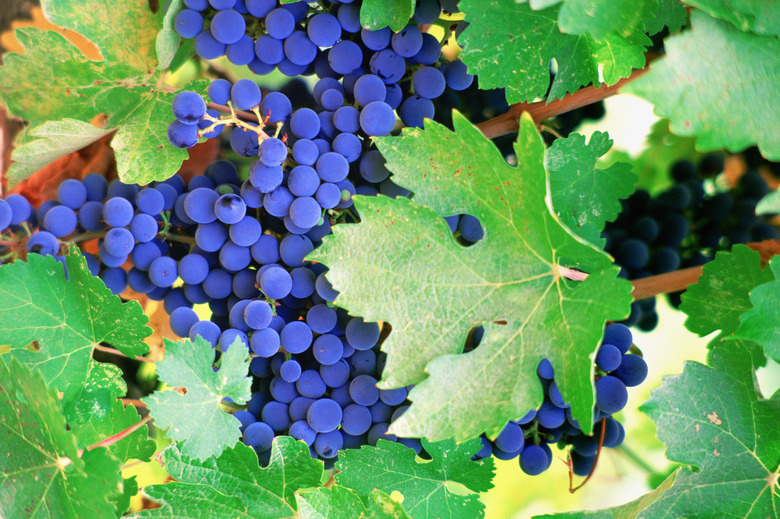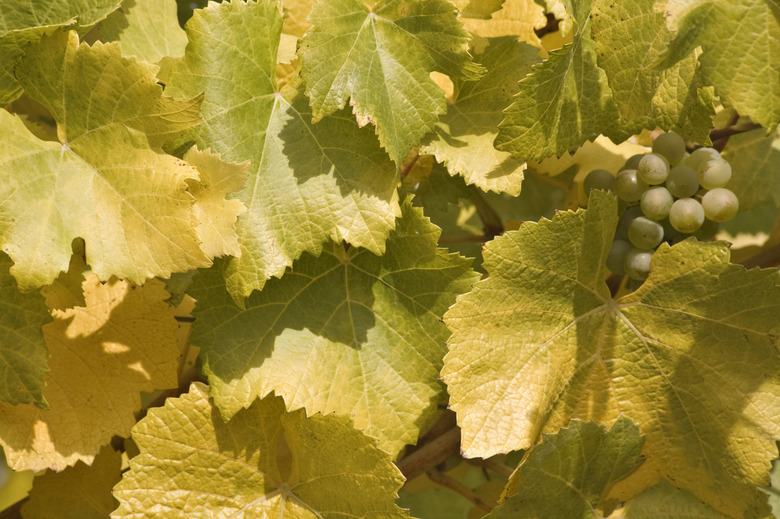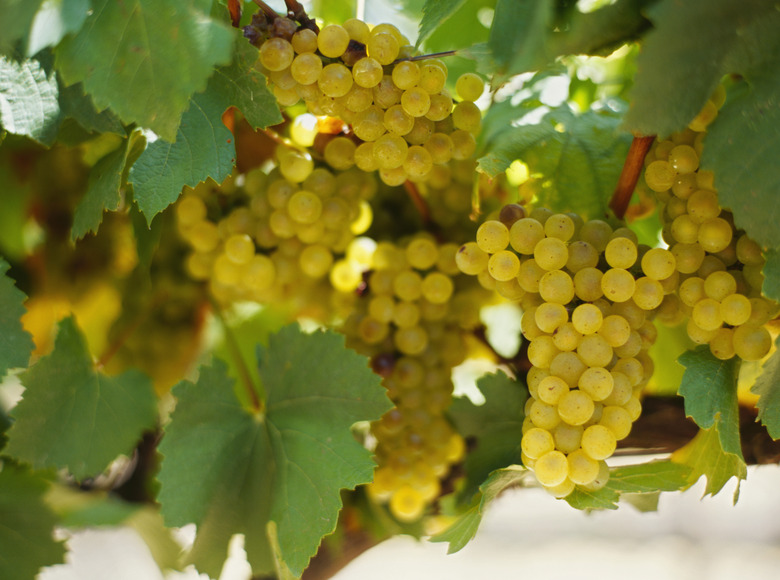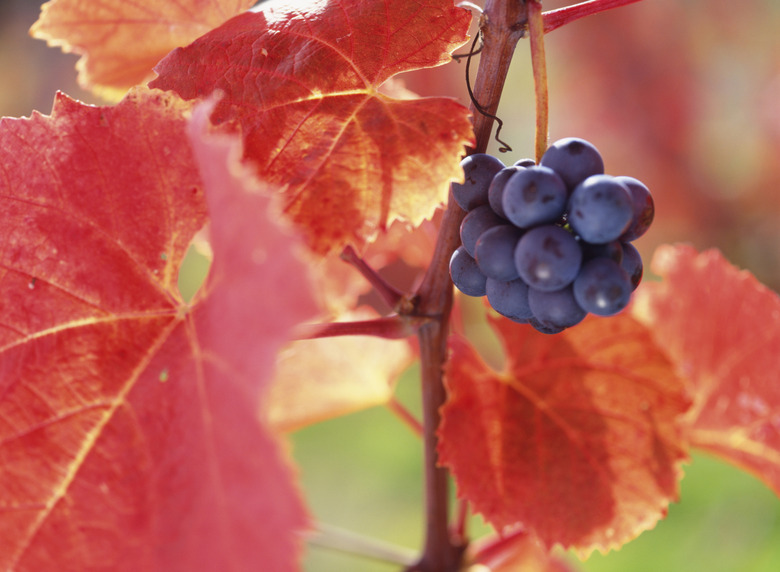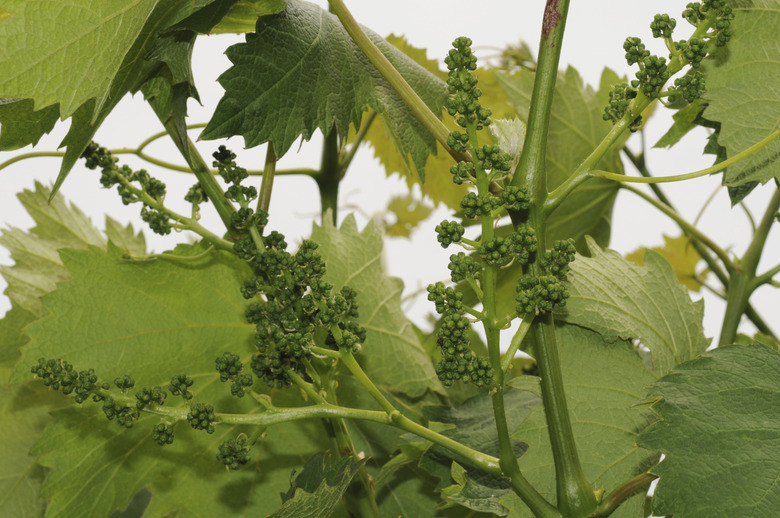How To Identify Grapevine Leaves
Grapevines (Vitis spp.) include the primary cultivated wine grape (Vitis vinifera) and the common wild grapes: fox grape (Vitis labrusca), summer grape (Vitis aestivalis) and riverbank grape (Vitis riparia). Today, many grape varieties are hybrids of these and other grape species. Although wine grapes grow mostly in vineyards and home gardens, you may come across wild grapes in open woods, on roadsides, near ponds and rivers. Wine grape is hardy in U.S. Department of Agriculture plant hardiness zones 5 through 9. Fox, summer and riverbank grapes are hardy in USDA zones 6 through 9, 3 through 7 and 3 through 9, respectively. You can easily identify wine and wild grapevine leaves, even in the absence of grapevine fruit, because they have a number of distinguishing characteristics.
- include the primary cultivated wine grape (Vitis vinifera) and the common wild grapes: fox grape (Vitis labrusca), summer grape (Vitis aestivalis) and riverbank grape (Vitis riparia).
- Fox, summer and riverbank grapes are hardy in USDA zones 6 through 9, 3 through 7 and 3 through 9, respectively.
Upward Vine Growth
Grapevines are vigorous climbers and always grow upward, unlike other types of vines that grow equally well along the ground. All grapevines climb by means of tendrils. Wine grapes are trained to grow on wires and other supports, whereas wild grapes climb fences, trees, shrubs and other vegetation. The riverbank grapevine can reach 50 feet in length and may overwhelm other plants. Grapevinelike leaves on an upward-growing vine are the first step in identifying grapevine leaves outdoors.
Leaf Shape and Size
Grapevine leaves have a distinctive lobed shape or heart-shaped form. The leaves have three to five lobes. Some grapevine leaves, such as those of summer grape, are deeply lobed, while fox and riverbank grapes' leaves have shallow lobes. It is not uncommon to find deep- and shallow-lobed leaves on the same vine. The leaves of summer grape are 3 to 8 inches long. Fox grape has 4- to 8-inch-long leaves, and riverbank grape has leaves up to 6 inches long. The leaves of wine grape range from 3 1/2 to 11 inches long, depending on the variety. The width of a grapevine leaf is about the same as its length.
- Grapevines are vigorous climbers and always grow upward, unlike other types of vines that grow equally well along the ground.
- Some grapevine leaves, such as those of summer grape, are deeply lobed, while fox and riverbank grapes' leaves have shallow lobes.
Leaf Edges and Underside
The margins of all grapevine leaves are toothed. Leaves on wine grape and riverbank grape are coarsely toothed while fox grape leaves are finely toothed. Look at the underside of leaves to further the identification process. The upper surface of grapevine leaves is smooth and bright green, but the underside is a duller color and exhibits wooly hairs that are white or light brown.
Grapevine Tendrils
If you come across a vine's leaves that resemble grapevine leaves but the vine doesn't have tendrils, then the leaves aren't grapevine leaves. Tendrils are essential for grapevines to climb. Grapevines usually have forked tendrils opposite every two or three leaves along the vines. Fox grapevine is an exception to the rule because its tendrils often are situated opposite three or more leaves in a row.
- The margins of all grapevine leaves are toothed.
- Fox grapevine is an exception to the rule because its tendrils often are situated opposite three or more leaves in a row.
References
- University of Illinois Extension: Grape, Vitis Vinifera
- Plants for a Future: Vitis Labrusca — L.
- Plants for a Future: Vitis Aestivalis — Michx.
- Critical Site Construction Products, Prairie and Wetland Center: Vitis Riparia
- U.S. Department of Agriculture: Plants Database — Vitis Vinifera L.
- U.S. Department of Agriculture: Plants Database — Vitis Aestivalis Michx.
- U.S. Department of Agriculture: Plants Database — Vitis Riparia Michx.
- U.S. Department of Agriculture: Plants Database — Vitis Labrusca L.
- U.S. Department of Agriculture: USDA Plant Hardiness Zone Map
